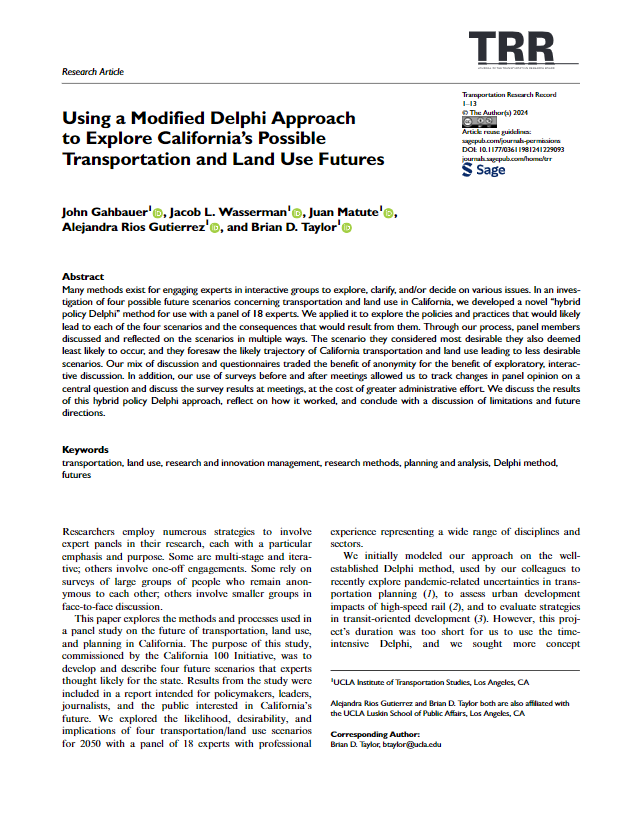Date: September 1, 2024
Author(s): John Gahbauer, Jacob L. Wasserman, Juan Matute, Alejandra Rios Gutierrez, Brian D. Taylor
Abstract
Many methods exist for engaging experts in interactive groups to explore, clarify, and/or decide on various issues. In an investigation of four possible future scenarios concerning transportation and land use in California, we developed a novel “hybrid policy Delphi” method for use with a panel of 18 experts. We applied it to explore the policies and practices that would likely lead to each of the four scenarios and the consequences that would result from them. Through our process, panel members discussed and reflected on the scenarios in multiple ways. The scenario they considered most desirable they also deemed least likely to occur, and they foresaw the likely trajectory of California transportation and land use leading to less desirable scenarios. Our mix of discussion and questionnaires traded the benefit of anonymity for the benefit of exploratory, interactive discussion. In addition, our use of surveys before and after meetings allowed us to track changes in panel opinion on a central question and discuss the survey results at meetings, at the cost of greater administrative effort. We discuss the results of this hybrid policy Delphi approach, reflect on how it worked, and conclude with a discussion of limitations and future directions.
About the Project
While the COVID-19 pandemic caused ridership on public transit and shared mobility to drop precipitously and put severe strain on their finances and operations, all was far from well prior to the pandemic. Transit ridership had dropped across the state in the half-decade prior to the pandemic, despite increasing public investment, and the relationship between shared mobility and regulators was oft-disputed. Thus, looking during and beyond the recovery from the pandemic, this project seeks to answer the question: what is and should be the future role and structure of public transit and public shared mobility in California?


